With the development of air transport, airports and airlines around the world are investing in high-end infrastructure and facilities for airplanes.
According to the International Civil Aviation Organization (ICAO) the number of passengers in 2016 was 3.8 billion compared to 2.28 billion in 2009. This dynamic increase forced airlines to provide additional space for more planes and airports. Although building a hangar is not a complicated matter when using modern technology, choosing the right flooring solution can be tricky.
To help make it simple, we’ve written the following six tips that you should consider when choosing a hangar’s floor:
1. Durability
The floor in an aircraft hangar is subjected to various factors that can damage the concrete substrate if there is no suitable protective coating. The floor must first of all withstand the weight of the planes. For example, a Boeing 737-800 aircraft, used by airlines such as Ryanair, weighs around 40 tons on its own. The movement of such a large vehicle is a big challenge for the floor due to the extreme mechanical loads, even ‘light weight’ loads such as ground handling vehicles, carts and wheeled equipment are at risk of scratching the floor and impacts from dropped tools or spare parts could also affect the finish. Therefore, it is essential to make sure that the floor you choose is robust and durable.
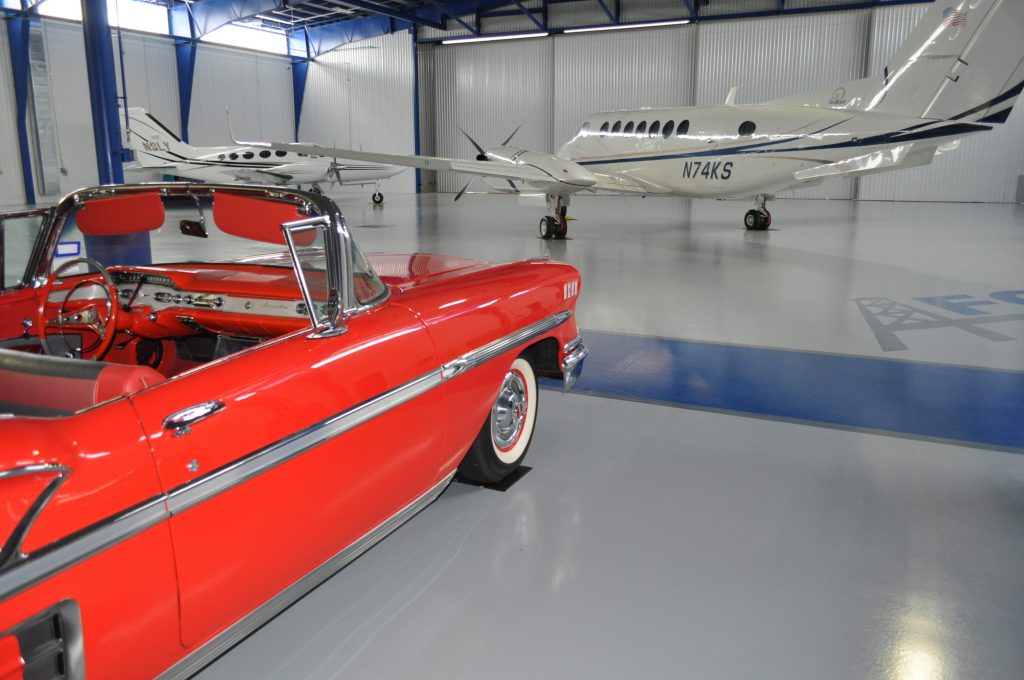
Fogle Aviation installed a large polymer floor at a private aircraft hangar located in Sugarland, TX
2. Chemical resistance
When dealing with the servicing of an aircraft, the floor is exposed to chemical compounds contained in materials such as aviation fuel, hydraulic fluids (eg. Skydrol) or lubricants. To make sure that the hangar flooring system is up to the task at hand it must be resistant to both the short and long term effects of exposure to all the various chemicals that will be used onsite.
3. Colour
The colour of the floor in the hangar may seem a secondary issue, however it is worth thinking about – a bright and glossy surface will reflect the light and allow for better illumination of the room without the need to install additional lighting points. In well-lit hangars mechanics find it more comfortable to work in places such as under the chassis or wings of an airplane and it is easier for them to see any foreign objects on the floor and protect the aircraft from potential damage (known in aviation as FOD – Foreign Object Damage).
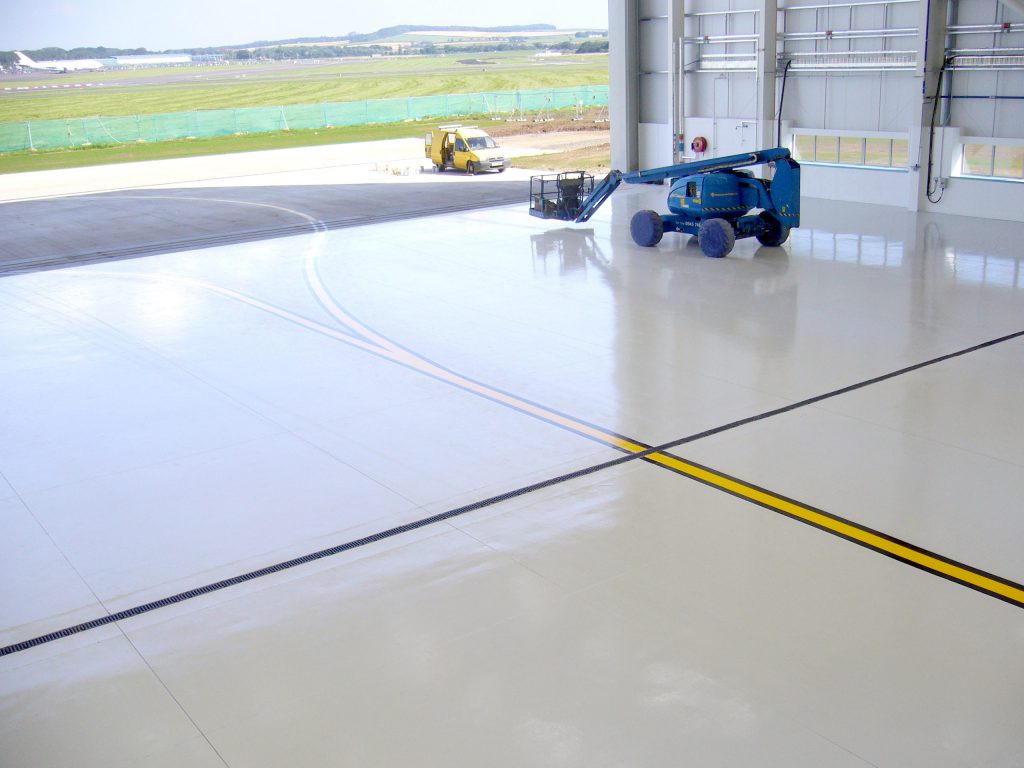
In 2010, Ryanair Airlines provided flooring for its brand new aircraft maintenance hangar in Prestwick, Scotland.
4. Aesthetics
Hangar aesthetics is strongly associated with the floor colour. After all, it’s not only a work space and technical backroom (although such zones should look visually pleasant as well), it’s also the backdrop to the whole operation. Even though the most common floors for aircraft hangars are bright shades of grey, there is no reason not to use other colours. Practically any other colour can be used to mark communication pathways or non-working areas. Brand colours of airlines or airports can be used as well to apply company logos and to tie the hangar into an overarching brand image.
Aircraft hangars at both civilian and military airports are often visited by delegations of VIPs: government or military officials or investors, not to mention the guests of the highest ranks, like heads of states. In such situations, making a good impression is certainly in the interest of every airport manager or hangar owner. A properly designed floor is able to help significantly here, especially in the hangar where apart from airplanes the floor is probably the most eye-catching element of the building.
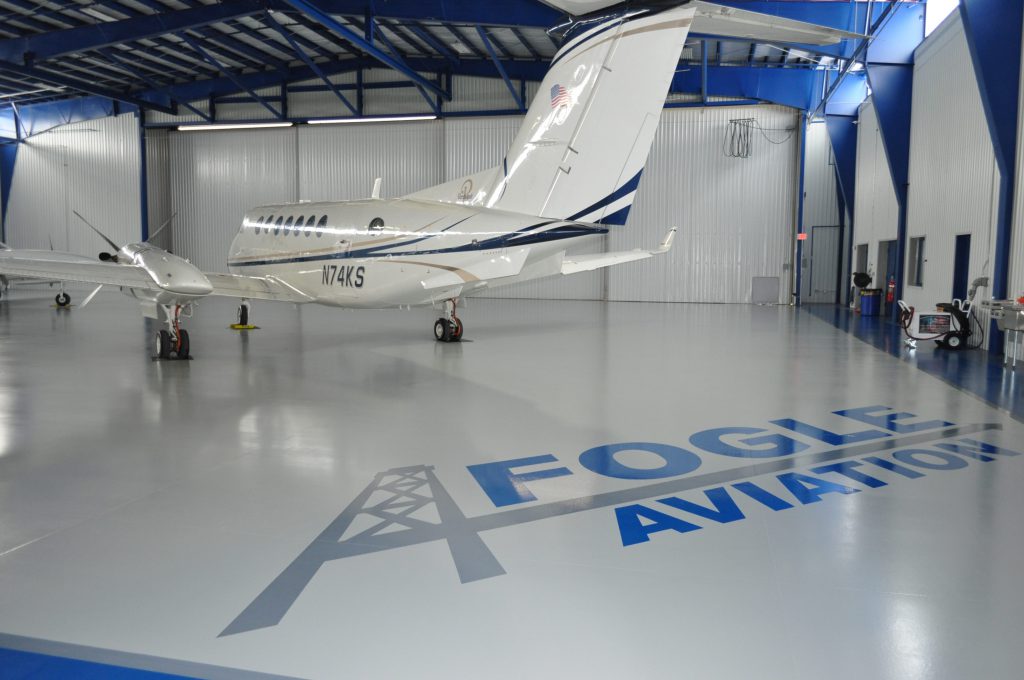
This floor installation features the Fogle Aviation logo inside the entrance of the hangar. This was accomplished using a custom decal stencil (size 25’ wide x 7’ height), which was then painted within the stencil using Flowseal HTS – the pigmented topcoat used within the standard system.
5. Easy to clean
Aircraft hangars often have vast floor areas spanning several dozen thousand square metres or more. The floor therefore needs to be designed in such a way that it is quick and easy to clean, saving on time, labour, expenses and making the whole site much more manageable.
6. Antistatic
Antistatic properties are not mandatory for hangar floors but it is worth considering. An antistatic floor will discharge electrical build up in the floor and protect the advanced and expensive electronic components that are a vital part of the avionics or diagnostic equipment from electrical discharges that could badly impair them.
7. Recommendations
Resin flooring solutions provide a durable and chemical resistant substrate protection for aircraft hangars. They can withstand heavy loads, impacts, abrasion and wear, as well as chemical attack from fuel, lubricants and hydraulic fluids spills, including Skydrol.
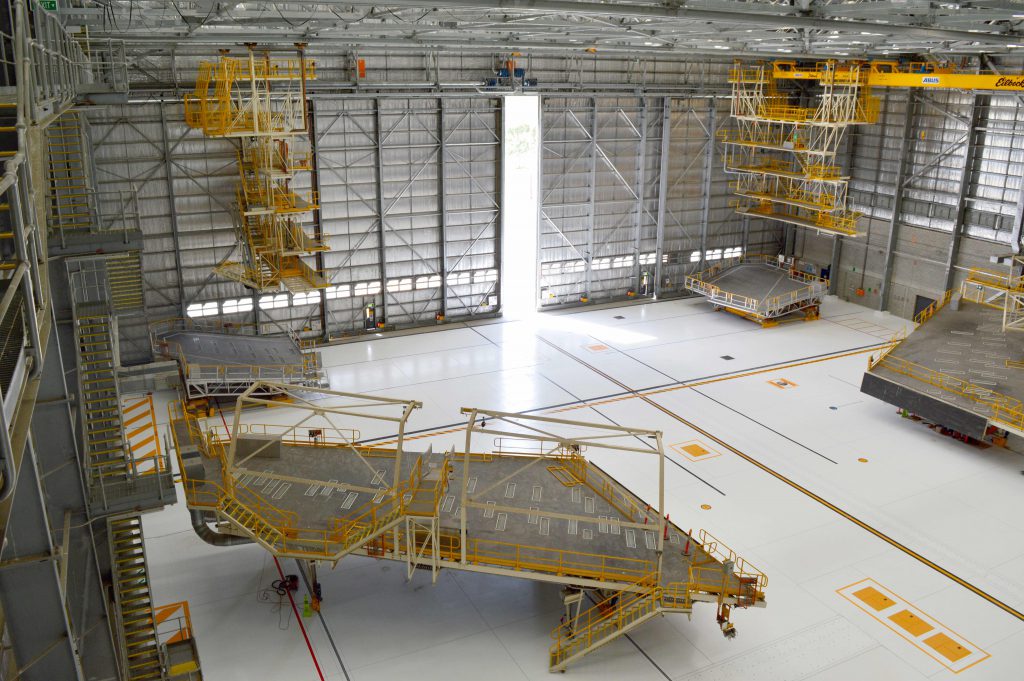
In 2010, the Royal Australian Air Force’s (RAAF) largest base, Amberley – located 8 km southwest of Ipswich, Queensland installed over 5,000 square metres of high performance resin flooring systems to protect the concrete substrate from inevitable chemical spillage, aviation fluid and heavy loads.
These solutions can be easily applied in virtually any colour with a matt or gloss finish. Any pattern is possible, as well as demarcation, zone marking or other design requirements. Additionally they are seamless, impermeable and easy to clean using manual or machine methods. Thanks to special resins and copper tape, a resin floor can also disperse static electric charges.
Want to learn more? If you are looking for a flooring solution for an aircraft hangar project or simply need more information on these products please contact your local Flowcrete team.
3 thoughts on “6 Tips on Choosing Aircraft Hangar Flooring”
Comments are closed.

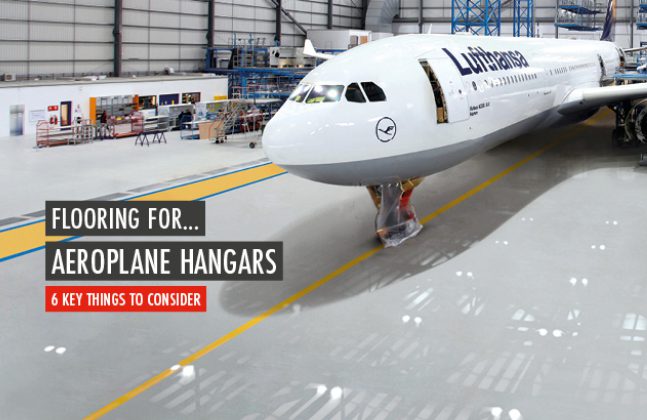




Howdy, we are developing renewable energy Executive Hangers at KBDU, USA, we are wanting to install the best floor system, we are installing Solar Thermal in-floor heating, curious about your products.
Hi Davide
Many thanks for your comment. As you’re based in the US the best people to get in touch with to discuss resin flooring in more depth would be these guys http://www.keyresin.com/contact.html#
Cheers,
Dan
I really liked these tips on choosing Aircraft Hangar Flooring. With these, I can easily choose the best hangar flooring. At the time of long-lasting Flooring solutions, Airplane hangars have unique requirements when it comes to safe, efficient, and durable flooring. As per my experience, Aviatech provides Hangars that allow you to begin or resume operations in the shortest time possible, ensuring your business can continue uninterrupted.